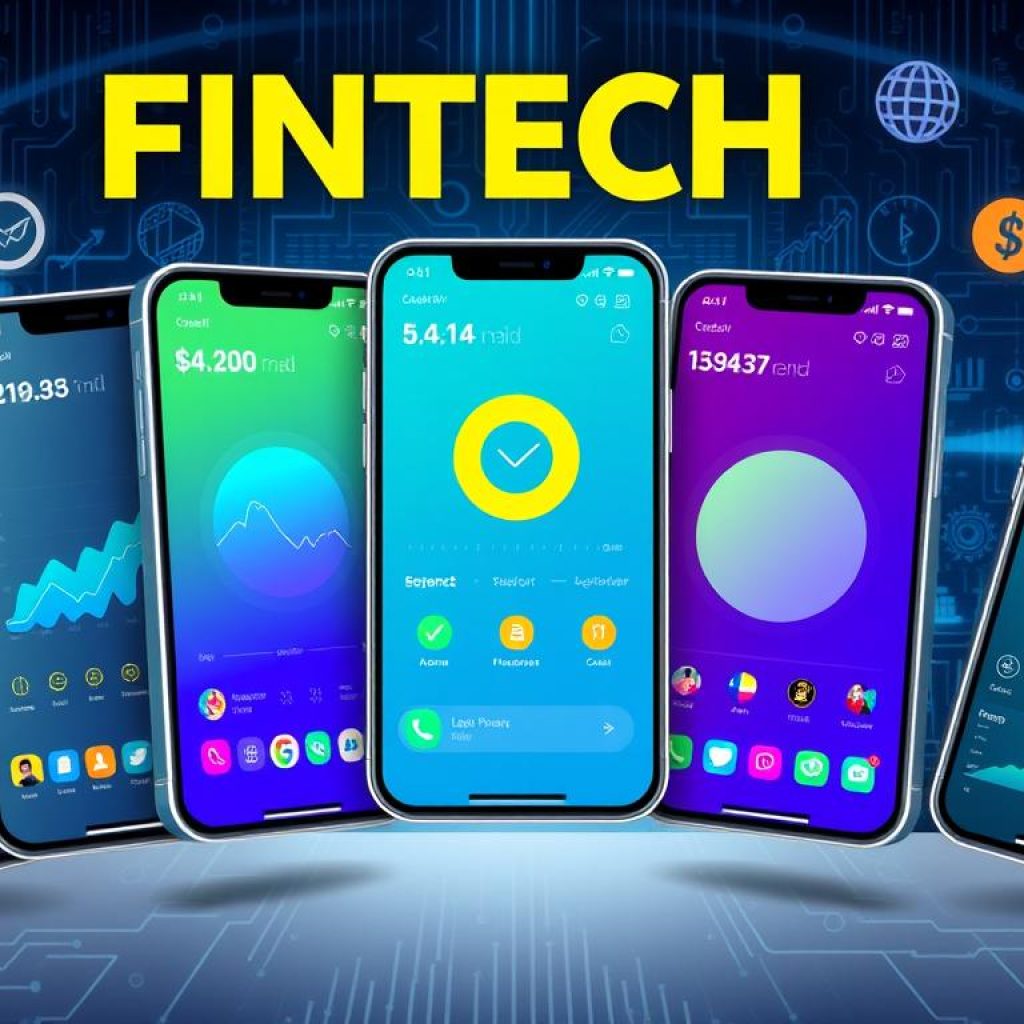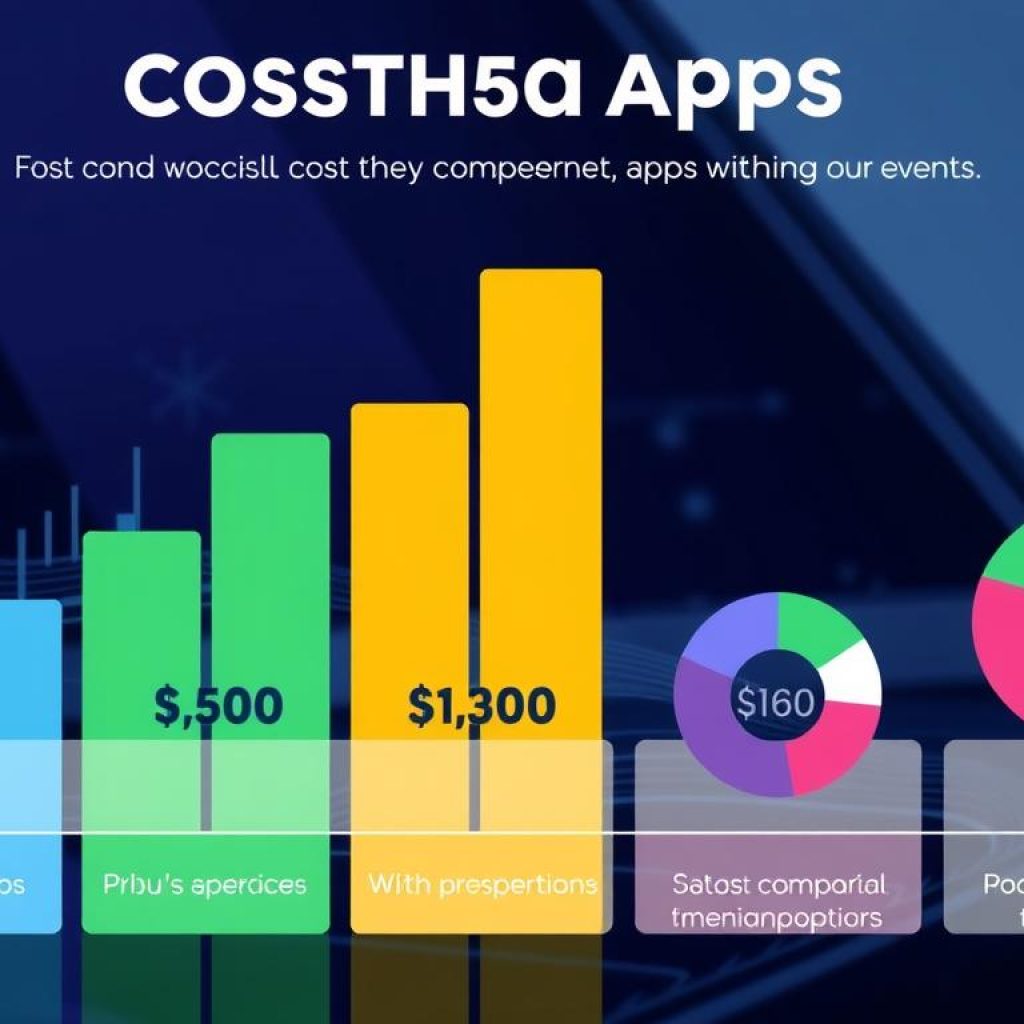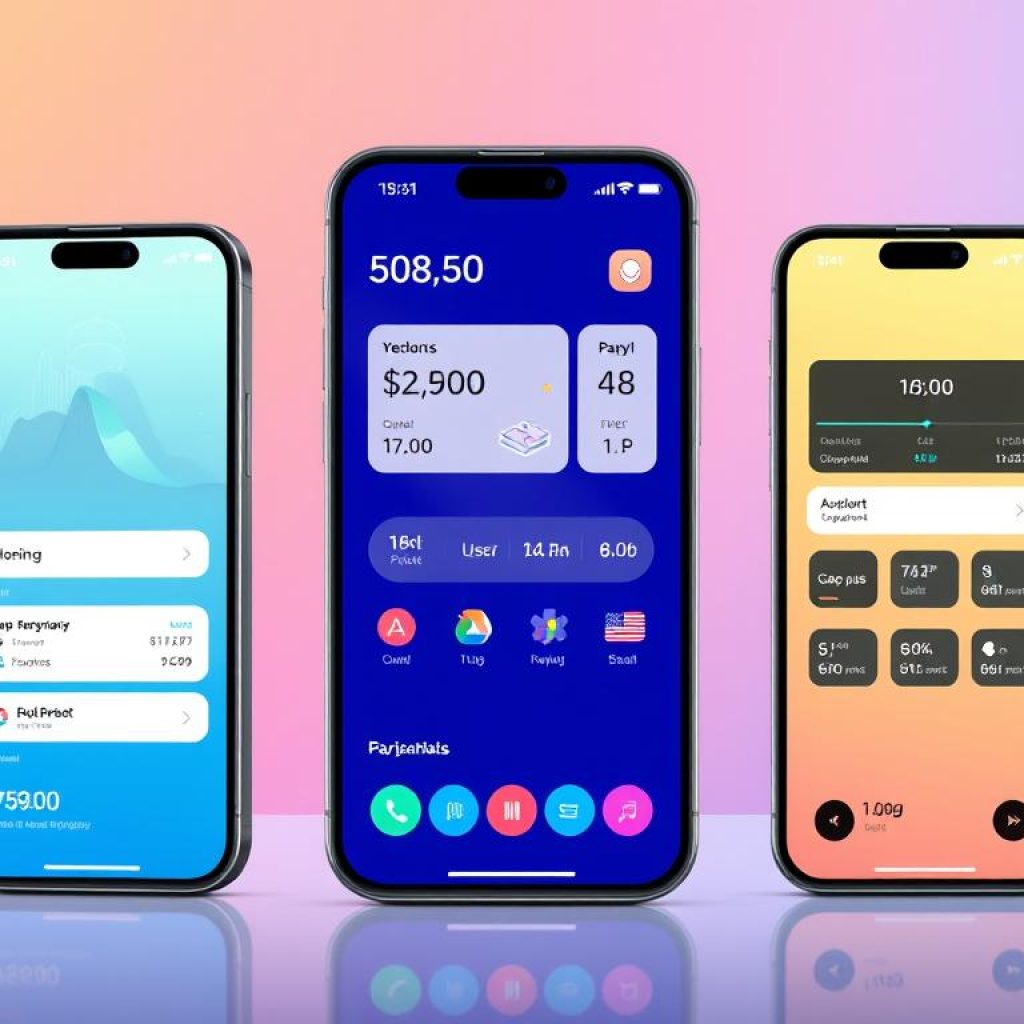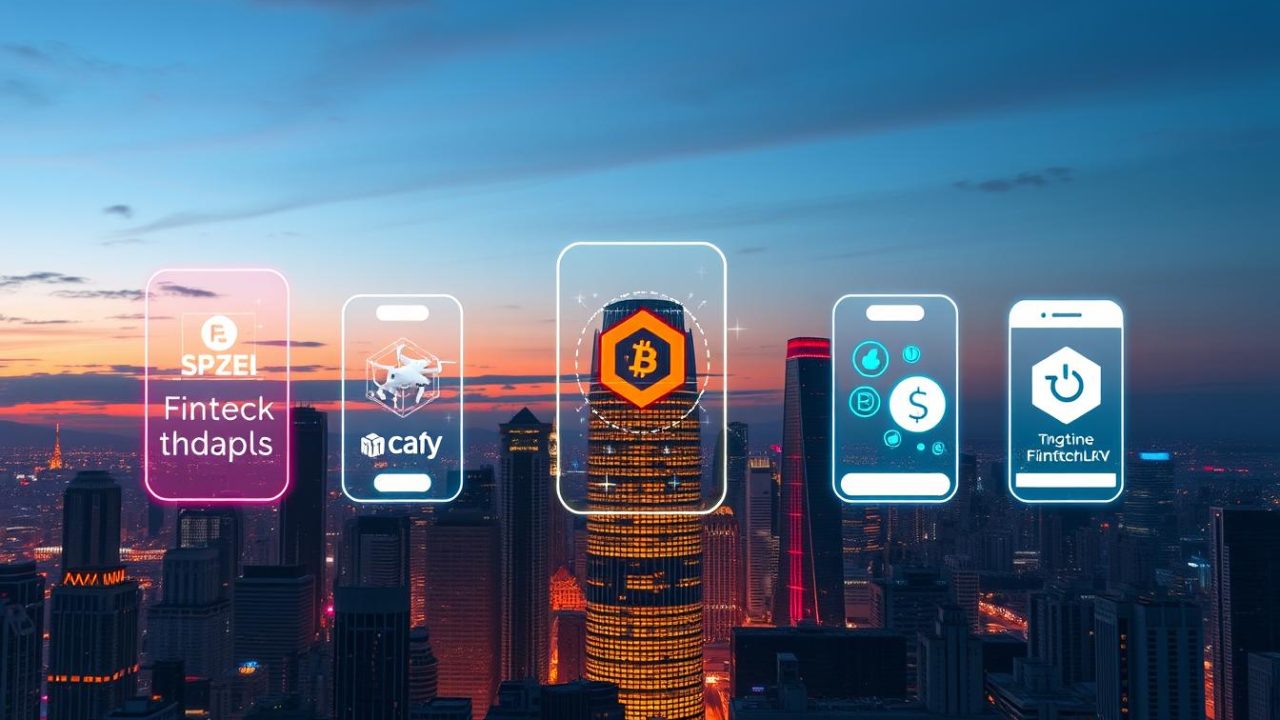We live in a digital age where fintech apps have changed how we manage money. Mobile banking and digital payments make it easy to keep track of our finances. Fintech Apps in 2025 are getting more popular because they’re convenient and safe for transactions, bill payments, and even investing.
There are many fintech options out there. From mobile banking to digital payments, these apps are reshaping our money management. But, with so many choices, picking the right one can be tough. That’s why we’re comparing the top 5 fintech apps in 2025 to help you decide.
We aim to give you a detailed look at the best fintech apps. We’ll cover their features, benefits, and downsides. We’ll focus on digital payments, mobile banking, and other important aspects of Fintech Apps in 2025. By the end, you’ll know which fintech app suits you best.
Key Takeaways
- We will be comparing the top 5 fintech apps in 2025
- Fintech apps offer a convenient and secure way to manage your finances
- Mobile banking and digital payments are key features of fintech apps
- We will provide a comprehensive overview of each app’s features and benefits
- Our goal is to help you make an informed decision about which fintech app is right for you
- Fintech Apps in 2025 are changing the way we think about money
- Digital payments and mobile banking are becoming increasingly popular
The Evolution of Fintech Apps in 2025
Financial technology has made big strides, leading to new ideas and shifts in the market. Fintech apps have changed how we handle money, making it simpler and more convenient.
Looking at fintech today, we see a big move towards mobile-first solutions. Many people use their phones for banking and money transactions. This trend is likely to keep growing, with financial technology being key in shaping banking’s future.
- Increased adoption of digital payment systems
- Growing demand for personalized financial services
- Advances in innovation, such as blockchain and artificial intelligence
These changes are not just affecting how we deal with banks. They’re also changing market trends, as old banks try to keep up.
Looking ahead, it’s key to see how fintech affects traditional banking. This includes changes in how people act and the need for banks to innovate and keep up.
Understanding Modern Fintech Solutions
We focus on app security when checking out fintech apps. These apps use top-notch encryption and two-factor authentication. This keeps user data safe, making sure users have a secure experience. Mobile payment apps and digital wallets are getting more popular. They offer both convenience and security.
Modern fintech solutions also focus on user experience. They have easy-to-use interfaces and tools tailored to each user. Features like budgeting tools, investment tracking, and updates on transactions are common. These make managing money easier and more enjoyable, boosting user loyalty.
When looking at financial solutions, we consider a few things:
- Security measures, such as encryption and two-factor authentication
- User experience, including interface design and personalized tools
- Features and benefits, such as budgeting and investment tracking
Understanding what fintech solutions offer helps us choose the right apps. Whether we need a safe payment method or a tool to manage our finances, there’s something out there.

As we dive deeper into fintech, keeping app security and user experience in mind is key. This ensures a safe and smooth experience with financial apps.
Detailed Analysis of Each Contender
Exploring fintech apps, we must compare their features and benefits. Our aim is to give a detailed cost comparison. We highlight what makes each app special, focusing on budgeting tools, investment options, and payment services.
We look at ease of use, customer support, and fees when evaluating these apps. This helps us find the best match for our financial goals and preferences. Let’s dive into the top 5 fintech apps:
- App A offers strong budgeting tools and investment choices. It’s easy to use and has great customer support.
- App B has a wide range of payment services, including international transactions. It has competitive fees and is very secure.
- App C is easy to use, perfect for beginners. Its simple design makes it a great choice.
- App D has a full range of features, including budgeting, investment, and payment services. It focuses on security and customer support.
- App E is known for its unique investment approach. It combines traditional and alternative investment options.
By looking at each app’s features and benefits, we can make a better choice. A detailed cost comparison helps us see the value each app offers. This way, we can pick the app that best fits our needs, offering great features, benefits, and cost.

Security and Privacy Measures
In the world of fintech apps, data protection is key. Users want to feel safe when they share their financial info. So, we’ve looked into the security measures these apps use. We’re checking out encryption and secure servers to see how they protect user data.
Looking at privacy policies is also important. We’re seeing how fintech apps handle user data. This helps users know which apps they can trust with their money.

- Two-factor authentication
- End-to-end encryption
- Regular security updates
These steps show fintech apps’ commitment to data protection and keeping users’ trust.
Fintech apps focus on privacy policies and security measures to offer a safe experience. As we dive deeper into fintech, we’ll watch these key areas closely.
Cost Comparison and Value Proposition
Choosing a fintech app often comes down to cost. We looked at the top 5 apps, focusing on monthly fees, transaction costs, and hidden charges. Our aim is to show you which app gives the most value for your money.
The costs for each app differ a lot. Some charge a flat monthly fee, while others have per-transaction fees. We also found hidden fees, like charges for international transactions or ATM withdrawals. Here’s what we found:
- App A: $5 monthly fee, 2% transaction cost, no hidden charges
- App B: $10 monthly fee, 1.5% transaction cost, $2 ATM withdrawal fee
- App C: no monthly fee, 3% transaction cost, $5 international transaction fee
- App D: $7 monthly fee, 2.5% transaction cost, no hidden charges
- App E: $12 monthly fee, 1% transaction cost, $3 ATM withdrawal fee
As shown, the costs vary a lot. We looked at fees and what each app offers. App A seems to be the best value, with a low fee and no hidden costs.

Choosing a fintech app depends on your needs and preferences. We suggest looking at the costs and what each app offers. This will help you pick the right one for you.
| App | Monthly Fee | Transaction Cost | Hidden Charges |
|---|---|---|---|
| App A | $5 | 2% | No |
| App B | $10 | 1.5% | $2 ATM withdrawal fee |
| App C | No | 3% | $5 international transaction fee |
| App D | $7 | 2.5% | No |
| App E | $12 | 1% | $3 ATM withdrawal fee |
Turkish Market Availability and Localization
We’re excited to dive into the Turkish market and its fintech app potential. The Turkish market is a great chance for fintech companies to grow and offer new financial solutions. Turkey has clear rules for the financial sector, making sure fintech apps follow the law.
Turkish banks are teaming up with fintech companies to offer services like payment processing and account management. This makes it simpler for users to handle their money. Key points of local banking integration in Turkey include:
- Linking local bank accounts to fintech apps
- Using local payment methods, such as credit cards and debit cards
- Access to investment platforms and portfolio management tools
The Turkish government has set rules to keep fintech apps safe and open. These rules cover data protection, anti-money laundering, and consumer protection. By following these rules, fintech companies can gain trust and a strong spot in the Turkish market.

The Turkish market is full of chances for fintech companies to grow and offer new financial solutions. By knowing the local rules and working with local banks, fintech companies can make a big impact. They can give users a smooth and safe experience.
| Fintech App | Regulatory Compliance | Local Banking Integration |
|---|---|---|
| App A | Yes | Yes |
| App B | Yes | No |
| App C | No | Yes |
User Experience and Interface Design
Good user experience is key in fintech apps for managing money well. We looked at the top 5 fintech apps. We checked how easy they are to use, their customer support, and how they work on mobile devices. A great design makes it easy to find and use different features.
Customer support quality is also very important. It can make a big difference in how users feel about an app. Effective customer support builds trust and loyalty. These are important for an app’s success over time.
Key Factors in User Experience
- Intuitive interface design
- Ease of navigation
- Quality of customer support
- Mobile performance and optimization
By looking at these factors, we can see which apps offer the best experience. A good experience means users will stick around and use the app more. As we use digital tools for money more, having a great user experience will become even more important.

Future Development Roadmaps
Looking ahead, the top 5 fintech apps have exciting plans. They aim to bring new updates and innovations to the table. This will help them keep improving and making life easier for users.
New features and technologies are on the horizon. These will make the apps even better at handling our financial needs. Some key areas they’re focusing on include:
- Expanding payment options and services
- Enhancing security and privacy measures
- Improving user interface and experience
These fintech apps are committed to leading the way in financial services. When choosing an app, think about their future plans. See how they’ll meet your changing needs.

Technology is changing fast, and these apps must keep up. They need to focus on updates and innovations to stay competitive. This way, they can offer the best experience and stay ahead in the market.
Conclusion: Making Your Final Choice
We’ve looked at the top 5 fintech apps of 2025. Now, you know more about financial technology. We’ve talked about their features, security, cost, and how easy they are to use. This helps you pick the final choice that fits your financial needs.
Our analysis suggests looking at apps that offer great solutions. They should have the latest features, strong security, and good pricing. Also, check if they’re available in your area, follow the rules, and work well with banks. This way, you can manage your money better.
The best fintech app for you depends on what you need and want. Look at each app’s features and benefits. Think about the good and bad points. With this guide, you can choose wisely and use digital financial tools to their fullest.
FAQ
What are the key features of the top fintech apps in 2025?
The top fintech apps in 2025 have many features. They include mobile banking, digital payments, and budgeting tools. You can also find investment options and personalized financial insights. These apps focus on making things easy for users, keeping their data safe, and working well with local banks.
How do the top fintech apps compare in terms of cost and value proposition?
We compare the costs of the top 5 fintech apps. This includes monthly fees, transaction costs, and any hidden charges. We also look at what each app offers for its price, considering its features and benefits.
What security and privacy measures do the top fintech apps have in place?
Security and privacy are key for fintech apps. We talk about the security measures, like encryption and secure servers. We also look at their privacy policies, how they handle user data, and protect it.
How do the top fintech apps perform in terms of user experience and interface design?
We check how easy the top fintech apps are to use. We look at navigation, customer support, and how well they work on mobile devices. A good interface is important for managing your money well.
What are the future development plans for the top fintech apps?
We look at the future plans of the top 5 fintech apps. This includes updates, new features, and expansions. Knowing what’s coming can help you make a better choice.
How do the top fintech apps compare in terms of availability and localization for the Turkish market?
For users in Turkey, we talk about the availability and how well the apps work locally. We focus on if they follow Turkish laws and work with local banks. This is important for meeting Turkish users’ needs.
How I Overcame the Top Challenges of Leading a Fintech Startup in 2025
10 Innovations That Will Shape the Future of Fintech in the Next Decade
Why 2025 Could Be the Tipping Point for AI in Financial ServicesFrom Zero to Impact: My Journey in Building a Fintech Empire (2025 Update)
How I Overcame the Top Challenges of Leading a Fintech Startup in 2025

